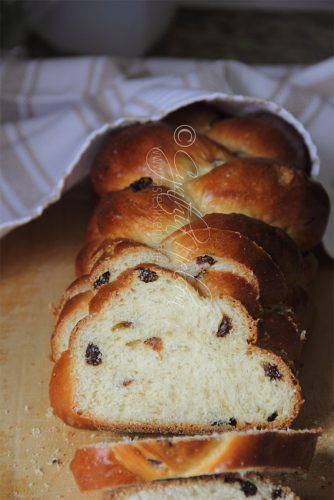 We use our ovens all year round for baking but at this time of the year, we really give them a workout. There are breads, cakes, pies, cookies, roasts, and casseroles to be made. Often, we have more than one thing in the oven at the same time on different shelves, sometimes with each requiring a different cooking time. This is also the time of the year when people decide to make a change and get a new stove-oven for exactly the reasons I mentioned above. They want holiday baking success.
We use our ovens all year round for baking but at this time of the year, we really give them a workout. There are breads, cakes, pies, cookies, roasts, and casseroles to be made. Often, we have more than one thing in the oven at the same time on different shelves, sometimes with each requiring a different cooking time. This is also the time of the year when people decide to make a change and get a new stove-oven for exactly the reasons I mentioned above. They want holiday baking success.

There are many people who will tell you they cook but don’t like to bake, for a variety of reasons, but one of the main ones is the intimidation that the process can bring, requiring exacting measurements and timings as well as abandoning control of their creations to the oven. The fear and hesitancy are understandable but not insurmountable. The first thing you need to do is to get to know your oven – what type it is – gas, electric, conventional or convection. It is important that you know this information also if you are going to be purchasing a new stove-oven because so much has changed with cooking appliances these days. The second thing you need to understand is the recipe for whatever you are making but let’s start with the oven.
Ovens
Electric versus Gas – Generally speaking, the difference is subtle but there can be variations when it comes to cooking certain foods. Some people argue that heat is distributed more evenly in an electric oven, but others counter that argument by testifying that gas ovens give better control of the exact temperature. And, with the changes in technology, many gas stoves are now able to heat evenly. I have experience using both gas and electric ovens and I have to say that I prefer gas because of the exact oven temperature that it maintains.
Convention versus Convection – Most of us have convention ovens in our homes. The main difference between these two types of ovens has to do with the circulation of heat. With a convention oven, the circulation of the heat can be uneven; this unevenness occurs when other pans and pots in the oven block the heat. This is very noticeable when you are using the top and bottom racks at the same time. You will often find that recipes that require both racks to be used will suggest that you switch pans on the racks halfway through the cooking time; this is to ensure even cooking. The rack that’s at the top is the one that cooks faster because the heat rises to the top and gets trapped there, hence the need to switch because it blocks the bottom pan from cooking evenly.
If you’re only using one rack though, you don’t have to worry about this. Most ovens have four (tiers) in which you can move the racks, the default is usually the second tier (from the bottom) but some recipes will tell you to put the rack in the middle which will then be the third tier
(from the bottom). The various rack positions are dictated by what you are cooking and the duration of the cooking. Of course if you have a three (tier) oven, it’s a no-brainer.
A convection oven circulates heat evenly and uniformly. This results in faster cooking at a lower temperature. The even heat circulation ensures that the same temperature reaches the top and bottom of foods as well as foods at all rack levels.
Convection ovens are much more expensive and are mostly used in professional kitchens such as restaurants, cooking schools etc. Of course those home cooks who can afford it shell out the big bucks for one of them.
Recipes
I cannot overstate the importance of reading a recipe before setting out to use it. Read it. Read it more than once and ensure that you understand what is required and needed.
There are four areas for you to consider – oven temperature, prepping of baking utensils, assembling of ingredients, and baking time, which also extends to how to treat the baked item(s) once they are out of the oven.
Oven temperature – Preheating your oven to the range specified in the recipe is very important. When you read “preheat the oven” in a recipe it means that the ingredients need to start cooking as soon as they go into the oven. If you don’t preheat you can get a sunken cake that has not risen, chicken that still looks white and raw even though you’ve had it in the oven for an hour and a half as the recipe instructed. As a guide, your oven should be preheated for at least 20 minutes before use. Some stove-ovens come with a preheat setting, use that as long as you trust your oven but if you want more of an insurance policy, so to speak, let it continue to heat for an additional 10 minutes.
Be aware also if your oven measures heat by Celsius or Fahrenheit. The numerical degrees for Celsius (C) are lower than the degrees for Fahrenheit (F). For example 177 degrees C = 350 degrees F. Therefore, check your recipe to ensure you have the right heat measurement. Some stove-ovens go by gas mark. A quick check online will give you oven temperature conversion charts. I cannot overstate the importance of ensuring you check and double check the oven temperature and correct measurement.
Prepping baking utensils – Before you start mixing your ingredients, prep the pans or dishes they are going to be baked in. A good recipe should instruct you early which size and type of pan or dish to use and also what to line or grease it with. Don’t be one of those people who realise at the last minute, just as they are about to pour the batter into the baking pan, that they have to go scrambling to butter and flour the pan.
Assembling ingredients – Assemble your ingredients, measure them as instructed by the recipe, whether by weight or volume and place them in individual little bowls, cups, or plates. This way, when you are ready to put the ingredients together, everything is at hand. This also prevents you from forgetting to add perhaps that all-important baking powder, salt or spice that is required.
And make sure your ingredients are at the temperature prescribed in the recipe. If the recipe says the eggs need to be at room temperature, then they need to be at room temperature. Get them out of the fridge early. For those of us living in tropical climates 20 – 30 minutes should be just right. Softened butter is softer than butter at room temperature. If you store your flour in the refrigerator, let it come up to room temperature before using.
Baking time – Once your pan or dish is in the oven, fight all urges to open the door and peek into the oven. Switch on the oven light if you have to, but don’t open the door. If you do, you’d be letting out valuable heat and it can cause, if you’re making a cake for example, to drop. The recipe would have given you an idea of the baking time, or it would suggest a particular doneness you should look for. Use the time as a guide and my rule of thumb is this – if the recipe says bake for 10 – 15 minutes, I’d check the results at the 10-minute mark, if it looks and tests done, I remove it from the oven, if not I’d extend it by the time suggested by the recipe, in this case 5 minutes. As you become more relaxed and familiar with baking, you will develop your own intuition about whether you should let it bake for the extra 5 minutes or if 3 minutes is good enough. All recipes are not created equal neither are ovens or ingredients.
Let the holiday baking begin!
Cynthia
cynthia@tasteslikehome.org










